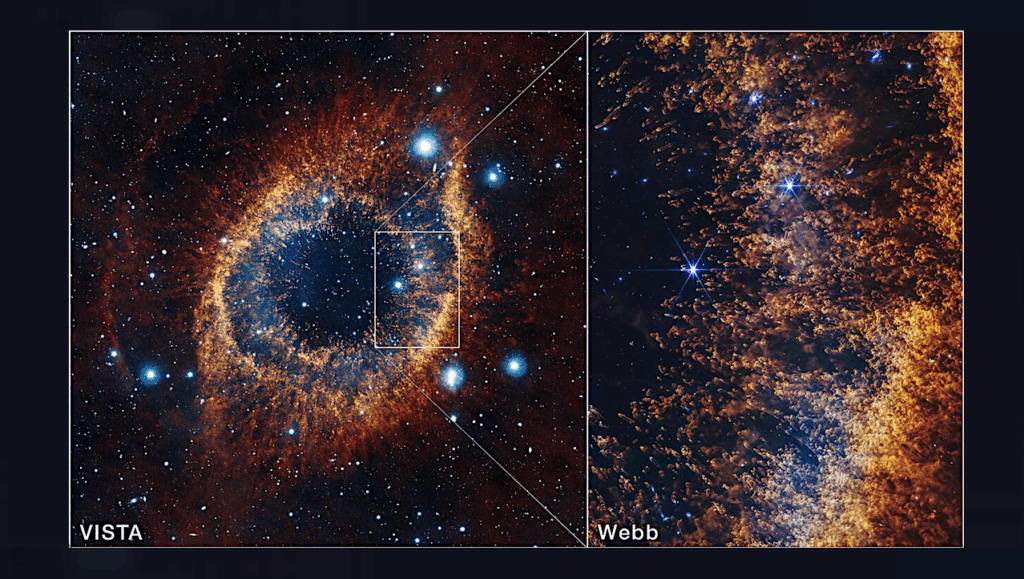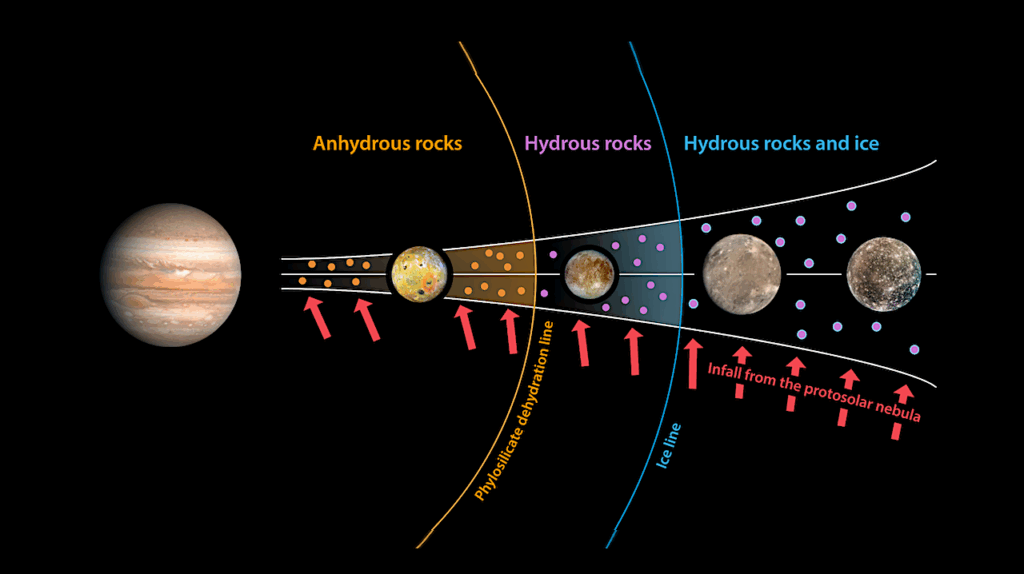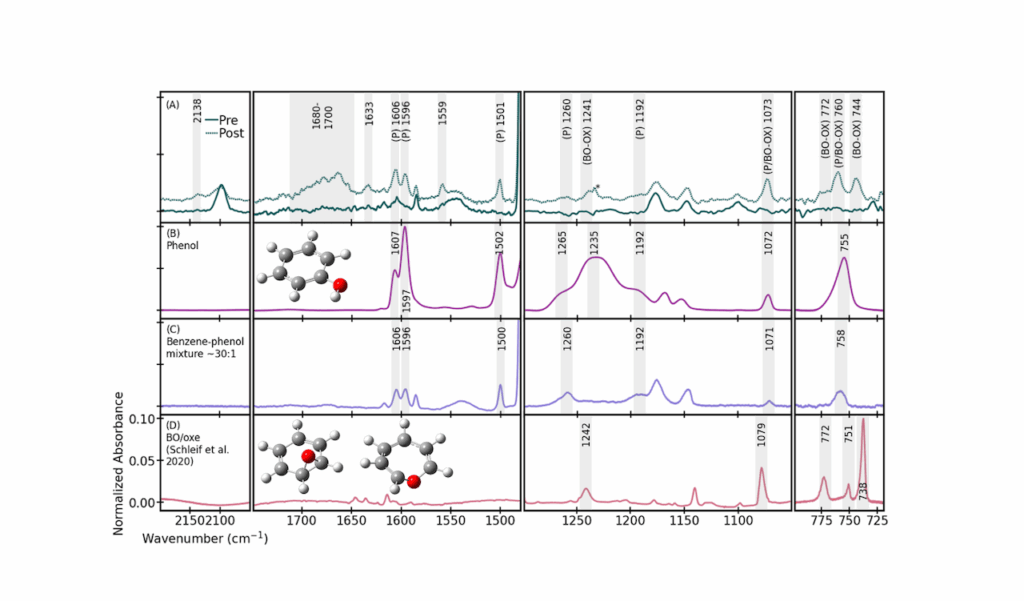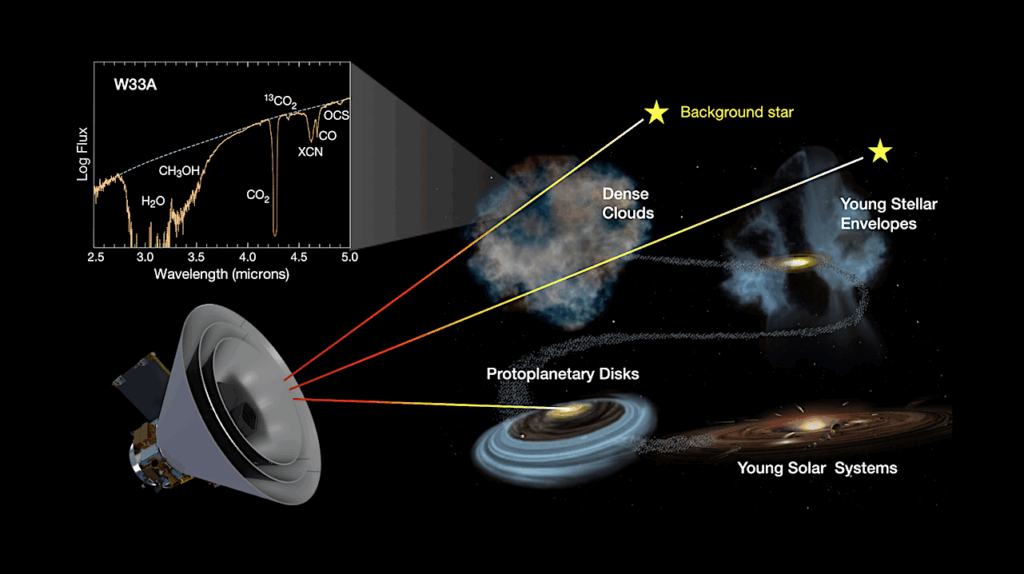Low NH3/H2O Ratio In Comet C/2020 F3 (NEOWISE) At 0.7 au From The Sun

A lower-than-solar elemental nitrogen content has been demonstrated for several comets, including 1P/Halley and 67P/C-G with independent in situ measurements of volatile and refractory budgets.
The recently discovered semi-refractory ammonium salts in 67P/C-G are thought to be the missing nitrogen reservoir in comets. The thermal desorption of ammonium salts from cometary dust particles leads to their decomposition into ammonia and a corresponding acid. The NH3/H2O ratio is expected to increase with decreasing heliocentric distance with evidence for this in near-infrared observations. NH3 has been claimed to be more extended than expected for a nuclear source.
Here, the aim is to constrain the NH3/H2O ratio in comet C/2020 F3 (NEOWISE) during its July 2020 passage. OH emission from comet C/2020 F3 (NEOWISE) was monitored for 2 months with NRT and observed from GBT on 24 July and 11 August 2020. Contemporaneously with the 24 July 2020 OH observations, the NH3 hyperfine lines were targeted with GBT. The concurrent GBT and NRT observations allowed the OH quenching radius to be determined at (5.96±0.10)×104 km on 24 July 2020, which is important for accurately deriving Q(OH). C/2020 F3 (NEOWISE) was a highly active comet with Q(H2O)≈2×1030 molec s−1 one day before perihelion. The 3σ upper limit for QNH3/QH2O is <0.29% at 0.7 au from the Sun.
The obtained NH3/H2O ratio is a factor of a few lower than measurements for other comets at such heliocentric distances. The abundance of NH3 may vary strongly with time depending on the amount of water-poor dust in the coma. Lifted dust can be heated, fragmented, and super-heated; whereby, ammonium salts, if present, can rapidly thermally disintegrate and modify the NH3/H2O ratio.
Maria N. Drozdovskaya, Dominique Bockelée-Morvan, Jacques Crovisier, Brett A. McGuire, Nicolas Biver, Steven B. Charnley, Martin A. Cordiner, Stefanie N. Milam, Cyrielle Opitom, Anthony J. Remijan
Comments: Accepted for publication in A&A; 18 pages, 8 figures, 6 tables
Subjects: Earth and Planetary Astrophysics (astro-ph.EP); Solar and Stellar Astrophysics (astro-ph.SR)
Cite as: arXiv:2307.11486 [astro-ph.EP] (or arXiv:2307.11486v1 [astro-ph.EP] for this version)
https://doi.org/10.48550/arXiv.2307.11486
Focus to learn more
Related DOI:
https://doi.org/10.1051/0004-6361/202346402
Focus to learn more
Submission history
From: Maria Drozdovskaya
[v1] Fri, 21 Jul 2023 10:41:30 UTC (2,575 KB)
https://arxiv.org/abs/2307.11486
Astrobiology, Astrochemistry








